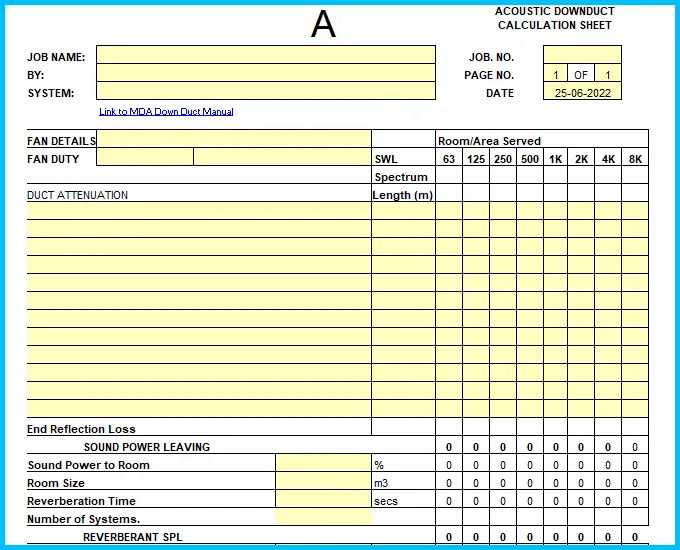
The acoustics calculator provides you with a quick overview of the acoustics in a room. Just type in your room data – measurements and material – and the acoustics calculator generates a precise overview of reverberation time, absorption area as well as other relevant information about acoustics. You can have the report sent to your e-mail or you can print it - either on paper or as a PDF.
Occupant comfort is the goal of all HVAC designers. Sound (or noise) is a key parameter in measuring comfort, in addition to temperature, humidity and Indoor Air Quality (IAQ). While acoustics consultants are usually involved in critical applications (such as performing arts centers), the task of creating a comfortable acoustic environment in most other applications falls on the HVAC engineer. This is because most background sound sources are generated by the HVAC equipment. The purpose of this manual is to familiarize the designer will the basics of acoustics, and to apply these basics to typical HVAC designs.
An acoustic noise calculation of a ventilation system can follow the procedure indicated in the example below:
Estimate all sound power sources.
Enter the manufacturer's sound power data or calculate the fan sound power.
Add safety factors - 3 dB is recommended.
Estimate the attenuation in the system.
The sound pressure levels - Lp - are converted to sound power level - Lw - at the terminals. The acoustic characteristics of the room as well as the number and location of the terminals must be considered.
a) Determine the acoustic characteristics of the room. In this example an average sound absorption for the room is used.
b) Determine whether the receiver are in the direct or reverberant field. In the example the listener is approximately 1.5 m from the terminal.
c) Find the rooms absorption characteristics. In the example the absorption for the walls, ceiling, floor, persons, curtains and their areas, is calculated to 30 m2 Sabine. According a) and c) the attenuation is 8 dB.
d) Determine how many terminals the listener are influenced by. Note! Remember to include supply and return fans. In the example the listener are influenced by two terminals. From c) we subtract 3 dB.
The attenuation from the terminal to the room is 5 dB. The values are entered in the example.
In the example the duct dimension is 250 mm. Attenuation due to end reflection is entered below.
Calculate the attenuation in unlined and lined ducts. Note that the table and diagrams list the attenuation in dB/m.